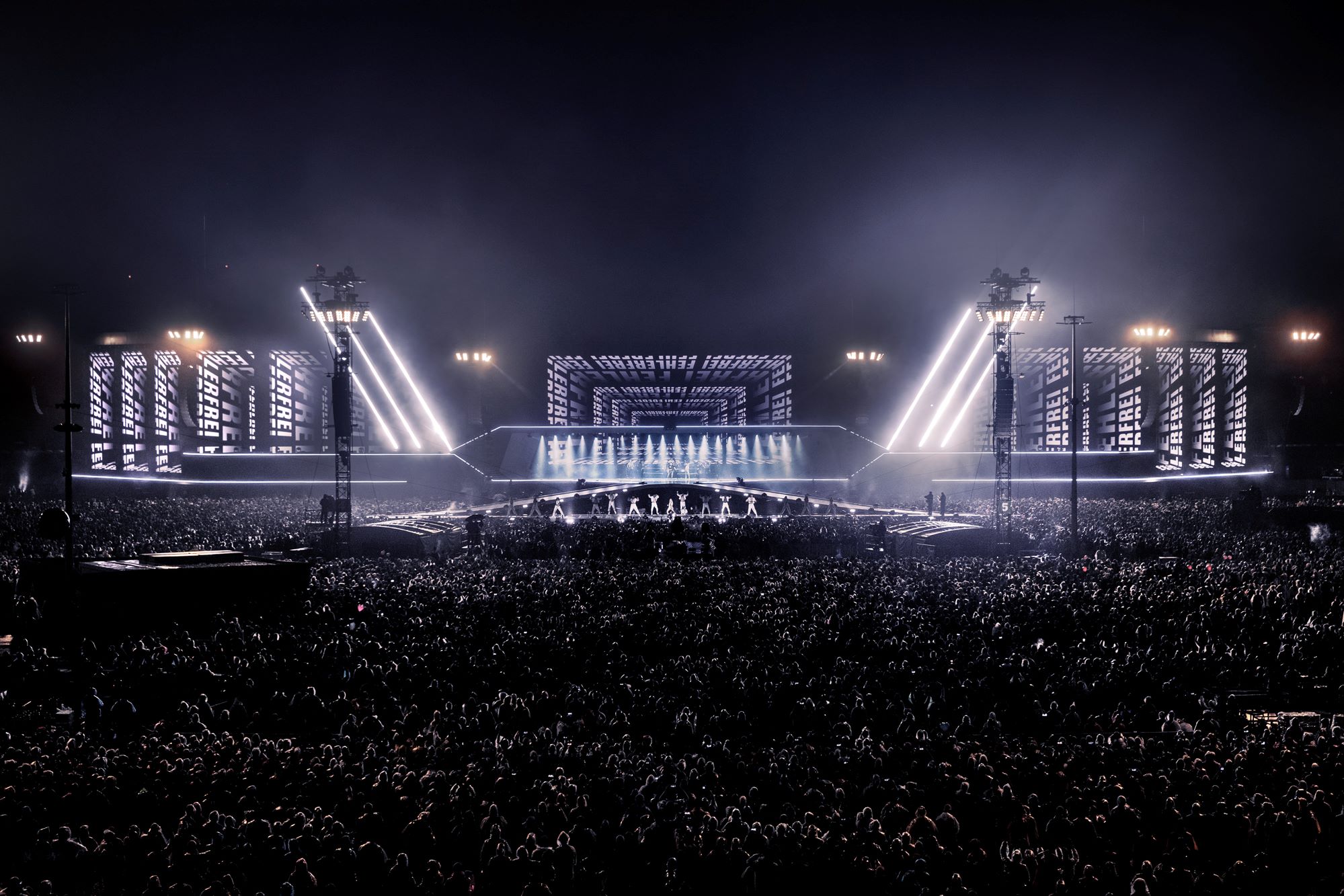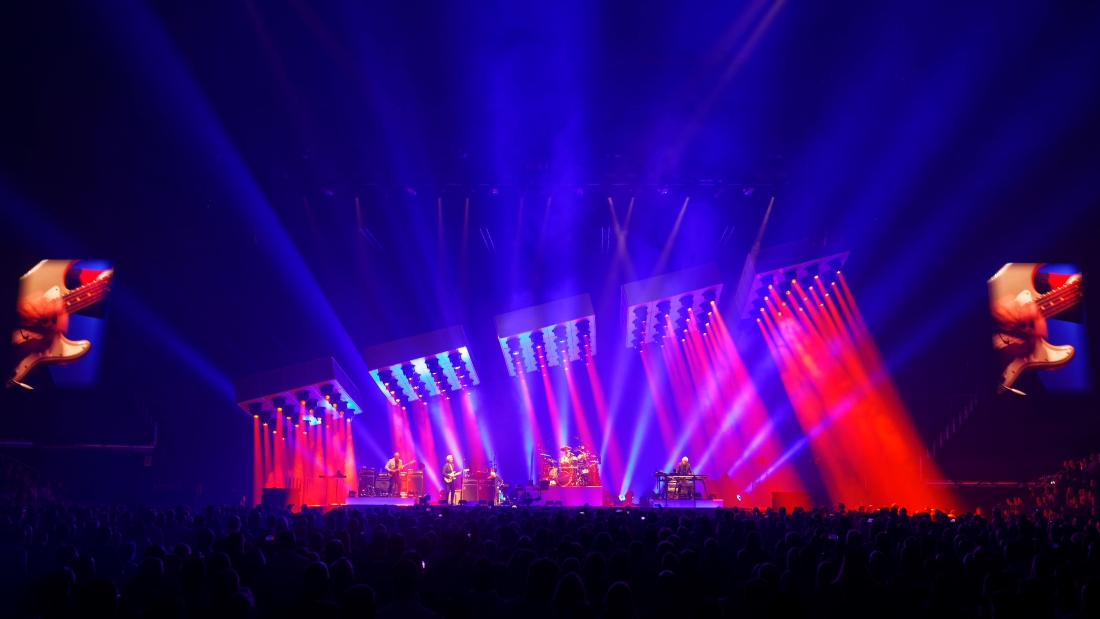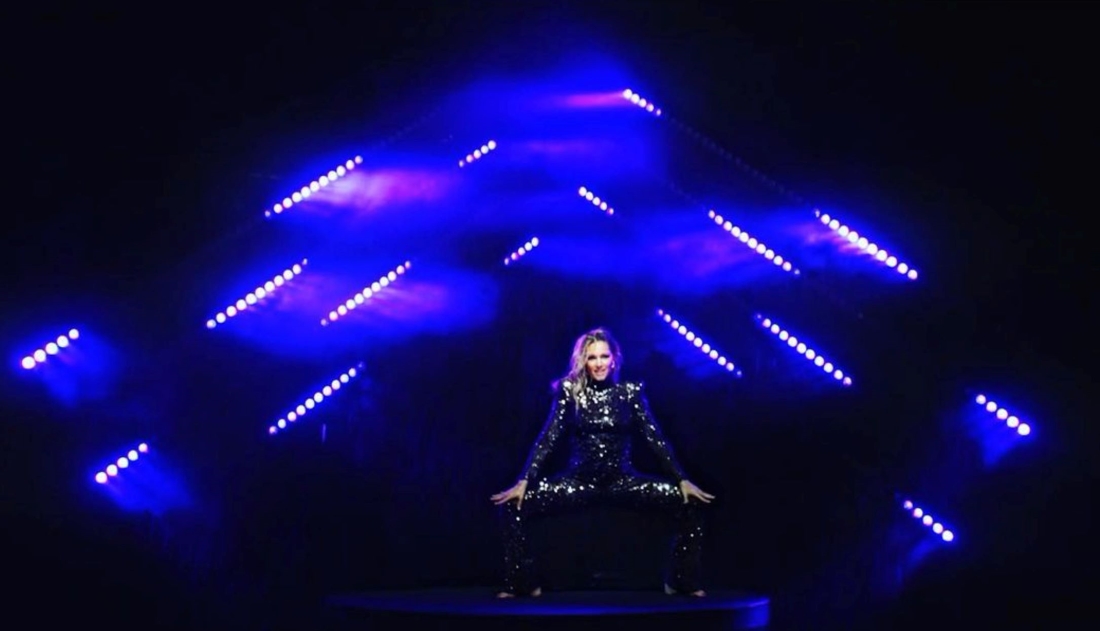
In the world of lighting design, Roland Greil stands as a symbol of innovation and excellence. Hailing from Bavaria, his journey from lighting small club bands to collaborating with global music icons like Adele and The Rolling Stones is a testament to his unwavering passion.
As a pivotal member of the LIT Lighting Design Awards jury, Roland’s expertise extends far beyond the spotlight. His work with Woodroffe Bassett Design (WBD) has brought captivating co-lighting designs to major tours, like Rammstein’s stadium tour and Genesis’s Last Domino tour. Roland’s impact isn’t confined to music; he’s lent his creative touch to television productions like the “Eurovision Song Contest” and diverse theatrical events.
Roland’s holistic approach, stemming from his deep understanding of media servers and integration of video and lighting, has earned him numerous accolades. His lectures and the book “Show Lighting” underscore his commitment to sharing insights and methodologies with the next generation of lighting designers.
In this interview, Roland discusses his passion’s origins and how he ventured into entertainment lighting. His valuable lessons from the field, coupled with his creative philosophy, reveal a professional committed to humility and collaboration. Each project, a unique canvas, exemplifies his research-driven, visionary approach.
Roland’s remarkable portfolio and influence also highlight his role as a LIT Lighting Design Awards jury member. As he continues to sculpt immersive experiences, Roland’s legacy in lighting design remains unparalleled – a guiding light for aspiring designers worldwide.
It all started very early in my life, even though with a little detour. As a small kid at the age of 8, I got attracted by sound engineers at live concerts and made the decision to become one later in my life as well. Fast forward over the years of my childhood and being a teenager while playing with all show-related technology on an amateur level, I more and more got drawn to the visual side of things, which finally became the stepping stone on an immersive journey into the world of lighting and visual design.
After the key moment at a young age my dream has always been to work within the live entertainment industry. I have been blessed to get the opportunity to turn this dream into reality. It all started with self-built small lighting systems at my parent’s place and from there on evolved to work on local productions and for local vendors. From there on the productions got bigger, as well as the scope of my work more and more morphed into doing design work. The rest is as they say history.
Quite honestly there are too many to list here. And every day teaches you new lessons. Possibly one of the biggest lessons has been to learn the human part of our business. The creative side obviously is the base for all our work, but how to sell it, how to communicate, as well as to stay a non-ego-driven person is the real key to success in the longevity of things. Furthermore, to understand and accept that in 98% of our work, it is never about us, as it is always about the artist, show, play or even architecture, that we light. They’re the stars and our work is “just” a supportive medium.
In terms of challenges, I love all of them, as they spice up our work and also motivate us to be a better person. I think some of the biggest challenges are still managing client’s expectations versus budget limitations and technical feasibility, as well as dealing with deadlines and tight schedules.
For sure there is a certain workflow or plan of attack, that is the baseline for every project. I think you need this to deliver the best possible result in the given time frames. That said, as every client and project is different, every project’s development is slightly different and must be treated individually as well. An important thing is, that my personal creative process always starts with research and a profound understanding of my client’s vision, needs and everything related. That leads to a purely creative step to define/ draw the image, that we want to achieve together before the first technical step comes into play, where you translate this vision into reality.

Genesis The Last Domino tour. Credit: Co Lighting Design and Lighting Director for WBD. Photo Credit: MHVogel
I have been blessed to work on some outstanding projects with very special clients, artists and creatives. Honestly, I’m a bit proud of each and everyone regardless of their size. Possibly one of the recent ones that stick out for me personally is Genesis’s last tour, which I have been able to design together with my long-time friend Patrick Woodroffe, as this band has been always at the forefront within our industry and pushing boundaries for decades.
The book is mostly about workflows and how to approach a project to deliver the best possible result within all the restraints. Obviously, we also tried to cover helpful tools and basics to do so.
Life in general with all its aspects, like emotions, nature, art and basically all it involves. To just walk around in nature or in a city could trigger and spark so much inspiration and imagination.

Helene Fischer – Rausch Release. Credit: Lighting Design.
Currently are busy times, as I’m currently working on a few new arena and stadium tours for great artists, as well as some very special one-off projects, like for instance a big and creatively ambitious ceremony in the Middle East.
First of all, stay true to yourself at all times, seek inspiration everywhere you can and try to create your own bespoke design style/ language. And always stay a low-key, approachable human being. Never forget it is nearly never about yourself.